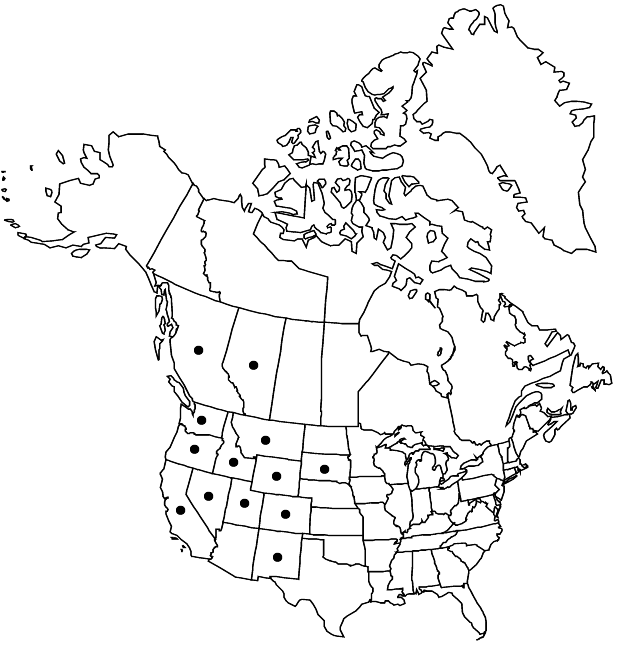Difference between revisions of "Vaccinium scoparium"
Contr. U.S. Natl. Herb. 5: 103. 1897 ,.
FNA>Volume Importer |
imported>Volume Importer |
||
| (6 intermediate revisions by 2 users not shown) | |||
| Line 7: | Line 7: | ||
}} | }} | ||
|common_names=Grouse whortleberry | |common_names=Grouse whortleberry | ||
| − | |basionyms={{Treatment/ID/ | + | |special_status={{Treatment/ID/Special_status |
| + | |code=E | ||
| + | |label=Endemic | ||
| + | }} | ||
| + | |basionyms={{Treatment/ID/Basionym | ||
|name=Vaccinium myrtillus var. microphyllum | |name=Vaccinium myrtillus var. microphyllum | ||
|authority=Hooker | |authority=Hooker | ||
| + | |rank=variety | ||
| + | |publication_title=Fl. Bor.-Amer. | ||
| + | |publication_place=2: 33. 1834 | ||
}} | }} | ||
|synonyms={{Treatment/ID/Synonym | |synonyms={{Treatment/ID/Synonym | ||
|name=Vaccinium erythrococcum | |name=Vaccinium erythrococcum | ||
|authority=Rydberg | |authority=Rydberg | ||
| + | |rank=species | ||
}} | }} | ||
|hierarchy=Ericaceae;Ericaceae subfam. Vaccinioideae;Vaccinium;Vaccinium sect. Myrtillus;Vaccinium scoparium | |hierarchy=Ericaceae;Ericaceae subfam. Vaccinioideae;Vaccinium;Vaccinium sect. Myrtillus;Vaccinium scoparium | ||
| Line 29: | Line 37: | ||
|elevation=700-3000 m | |elevation=700-3000 m | ||
|distribution=Alta.;B.C.;Calif.;Colo.;Idaho;Mont.;Nev.;N.Mex.;Oreg.;S.Dak.;Utah;Wash.;Wyo. | |distribution=Alta.;B.C.;Calif.;Colo.;Idaho;Mont.;Nev.;N.Mex.;Oreg.;S.Dak.;Utah;Wash.;Wyo. | ||
| − | |discussion=<p>The soft, tart, bright red berries of Vaccinium scoparium, to 6 mm diameter, have fair to good flavor and were gathered and eaten raw by the Kootenay, Okanogan, Shuswap, and other Indian tribes. Harvesting was probably done using wooden or fish-bone combs. Small fruit size, low yields, and difficult harvesting make commercial prospects for V. scoparium questionable.</p> | + | |discussion=<p>The soft, tart, bright red berries of <i>Vaccinium scoparium</i>, to 6 mm diameter, have fair to good flavor and were gathered and eaten raw by the Kootenay, Okanogan, Shuswap, and other Indian tribes. Harvesting was probably done using wooden or fish-bone combs. Small fruit size, low yields, and difficult harvesting make commercial prospects for <i>V. scoparium</i> questionable.</p> |
|tables= | |tables= | ||
|references= | |references= | ||
| Line 38: | Line 46: | ||
-->{{#Taxon: | -->{{#Taxon: | ||
name=Vaccinium scoparium | name=Vaccinium scoparium | ||
| − | |||
|authority=Leiberg ex Coville | |authority=Leiberg ex Coville | ||
|rank=species | |rank=species | ||
| Line 52: | Line 59: | ||
|publication title=Contr. U.S. Natl. Herb. | |publication title=Contr. U.S. Natl. Herb. | ||
|publication year= | |publication year= | ||
| − | |special status= | + | |special status=Endemic |
| − | |source xml=https:// | + | |source xml=https://bitbucket.org/aafc-mbb/fna-data-curation/src/2e0870ddd59836b60bcf96646a41e87ea5a5943a/coarse_grained_fna_xml/V8/V8_1015.xml |
|subfamily=Ericaceae subfam. Vaccinioideae | |subfamily=Ericaceae subfam. Vaccinioideae | ||
|genus=Vaccinium | |genus=Vaccinium | ||
Latest revision as of 22:41, 5 November 2020
Plants forming extensive colonies, 0.7–2 dm, rhizomatous; twigs green, angled, glabrous; ultimate branches compact, often forming broomlike clumps or tufts. Leaf blades pale green abaxially, elliptic, lanceolate, or ovate-lanceolate, 7–11 × 4–6 mm, margins finely serrulate, surfaces glabrous. Flowers: calyx pale green, lobes vestigial, glabrous; corolla pink, globose to urceolate, 3–4 × 3–4 mm, thin, glaucous; filaments glabrous. Berries red, ± translucent, or bluish purple, 4–6 mm diam. Seeds ca. 1 mm.
Phenology: Flowering early-mid summer.
Habitat: Alpine and subalpine meadows, heaths, talus slopes
Elevation: 700-3000 m
Distribution

Alta., B.C., Calif., Colo., Idaho, Mont., Nev., N.Mex., Oreg., S.Dak., Utah, Wash., Wyo.
Discussion
The soft, tart, bright red berries of Vaccinium scoparium, to 6 mm diameter, have fair to good flavor and were gathered and eaten raw by the Kootenay, Okanogan, Shuswap, and other Indian tribes. Harvesting was probably done using wooden or fish-bone combs. Small fruit size, low yields, and difficult harvesting make commercial prospects for V. scoparium questionable.
Selected References
None.